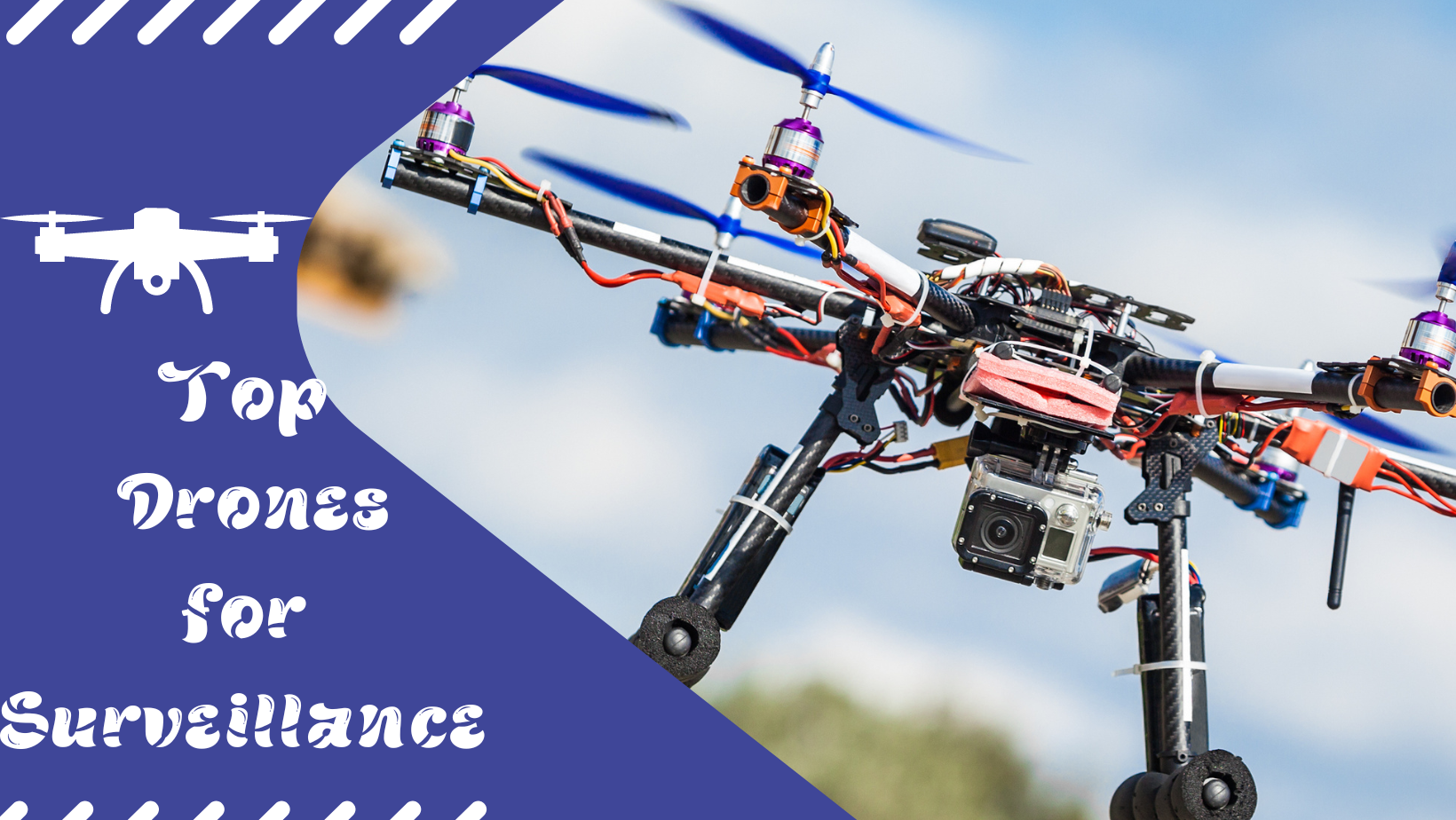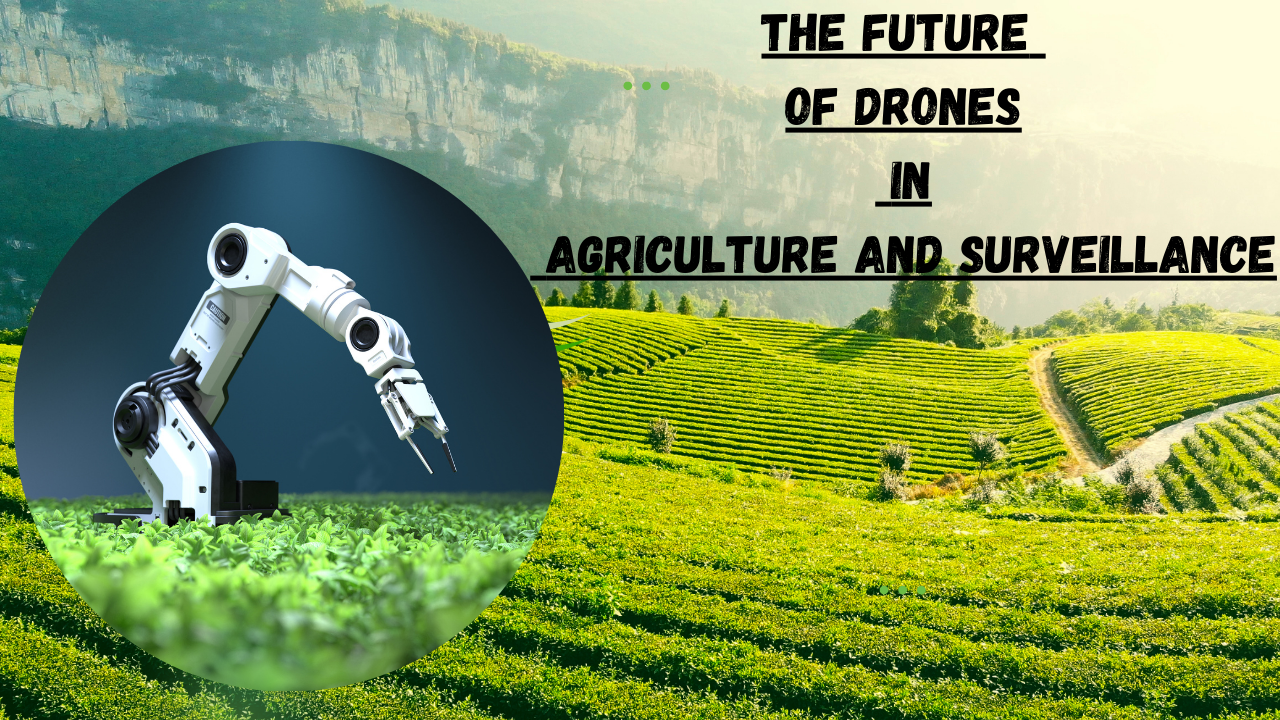Drones have become a game-changer in various industries, from agriculture to surveillance, where their advanced features enable businesses to work smarter and more efficiently. Whether it’s for monitoring crop health, mapping fields, or ensuring security, drones are now essential tools for optimizing operations. This article explores the best drones for commercial use in agriculture and surveillance, highlighting their key features, benefits, and the role they play in transforming these industries.
The Importance of Drones in Agriculture and Surveillance
Drones in Agriculture
Agriculture has seen significant advancements thanks to drone technology. Farmers can now get real-time aerial views of their crops, helping them monitor crop health, detect irrigation issues, and even identify areas of pest infestation. Drones can collect data that is vital for making decisions to improve yields and reduce costs.
Drones also play a crucial role in precision farming. This practice involves using data to guide farming decisions at a micro level, such as which crops need more water or fertilizer. By mapping fields and monitoring crops, drones help in applying inputs more accurately, which minimizes waste and boosts productivity.
Drones in Surveillance
In the realm of security and surveillance, drones have transformed how businesses and organizations monitor large areas. Whether it’s for border control, wildlife monitoring, construction site oversight, or security at large events, drones provide a cost-effective and flexible alternative to traditional security methods.
They can cover vast areas quickly, record high-resolution video, and even use thermal imaging to detect activity in low visibility conditions. This makes them ideal for both commercial security and environmental monitoring.
Top Drones for Agriculture
DJI Agras T30
The DJI Agras T30 is one of the most advanced drones for agricultural purposes. This drone is designed for large-scale farms and can carry up to 30 liters of liquid for spraying pesticides or fertilizers. Equipped with multiple sensors and high-precision radar, it can work in all weather conditions and fly in complex terrain, making it ideal for both small and large fields.
- Key Features:
- 30-liter spraying tank
- Real-time terrain sensing
- Smart agricultural management system
- Long battery life for extensive field coverage
Parrot Bluegrass
The Parrot Bluegrass is another excellent option for precision farming. It is lightweight and easy to use, specifically designed for crop mapping and health monitoring. With a multispectral sensor, this drone can provide detailed information about the health of crops, helping farmers make informed decisions.
- Key Features:
- Multispectral sensor for crop analysis
- Easy to deploy and use
- Rugged design for tough farming conditions
- Autonomous flight capabilities
SenseFly eBee X
SenseFly eBee X is a fixed-wing drone designed for large-scale mapping projects. It’s perfect for farmers who need extensive aerial mapping for planning and monitoring their operations. The eBee X is equipped with advanced cameras and can fly longer distances compared to most drones, making it highly efficient for large farms.
- Key Features:
- Fixed-wing design for long-range flights
- High-precision aerial mapping
- Up to 90 minutes of flight time
- Modular camera systems for various agricultural uses
Top Drones for Surveillance
DJI Matrice 300 RTK
The DJI Matrice 300 RTK is one of the top choices for commercial surveillance. This drone is equipped with multiple payload options, including thermal cameras and zoom lenses, which make it ideal for both day and night surveillance. The Matrice 300 RTK is commonly used by security firms, law enforcement, and emergency response teams for monitoring large areas and ensuring public safety.
- Key Features:
- Thermal and zoom camera options
- AI-powered object detection
- 55-minute flight time
- Resistant to extreme weather conditions
Yuneec H520
The Yuneec H520 is a versatile drone for commercial surveillance, designed for tasks like security inspections, law enforcement, and construction site monitoring. It features a six-rotor design, making it extremely stable in the air, even in windy conditions. With its long-range flight capabilities and various camera options, it’s an ideal drone for extended surveillance operations.
- Key Features:
- Six-rotor design for stability
- Multiple camera payloads
- 28-minute flight time
- Long-range communication and control
Autel Robotics EVO II Dual
The Autel Robotics EVO II Dual is perfect for both aerial and thermal imaging. Its 8K video capabilities and thermal sensor make it an exceptional drone for day and night operations. It’s widely used in sectors such as law enforcement, firefighting, and private security. The compact design also makes it portable and easy to deploy in various locations.
- Key Features:
- 8K video resolution
- Thermal sensor for night vision
- 40-minute flight time
- Portable and easy to deploy
Key Factors to Consider When Choosing a Drone
When selecting a drone for commercial use, several key factors must be considered to ensure it meets the specific needs of your business:
Payload Capacity
In agriculture, payload capacity is essential for carrying fertilizers, pesticides, or sensors. Surveillance drones, on the other hand, require high-quality cameras or thermal imaging equipment.
Battery Life
Battery life is critical, especially for large-scale operations. The longer the drone can stay in the air, the more area it can cover in a single flight. This is particularly important for surveillance and field mapping.
Range and Stability
For both agriculture and surveillance, drones must have a long operational range and remain stable in various weather conditions. Fixed-wing drones tend to offer greater range and endurance, while multi-rotor drones offer better maneuverability and stability.
Data Collection and Processing
For agriculture, drones need to be equipped with sensors that can collect data, such as multispectral imaging, to monitor crop health. For surveillance, high-definition cameras and AI-powered object detection systems are crucial for effective monitoring.
Ease of Use
Many drones now come with autonomous flight modes, making them easier to use even for those with limited experience. Look for drones with user-friendly controls and intuitive interfaces that can simplify operations.
The Future of Drones in Agriculture and Surveillance
Drones are continuously evolving, with more advanced technologies being introduced that will further enhance their capabilities. Artificial intelligence, machine learning, and real-time data processing are becoming standard features in commercial drones. These advancements will enable businesses in agriculture and surveillance to work more efficiently, reduce costs, and make smarter decisions based on accurate, real-time data.
In agriculture, the future will likely see drones being integrated with other technologies such as IoT sensors and autonomous tractors to create fully automated farms. For surveillance, drones will play an even bigger role in security, especially in urban areas, where they can monitor public spaces, assist in traffic control, and respond quickly to emergencies.
Conclusion
Drones have proven to be invaluable tools in both agriculture and surveillance. Whether it’s monitoring crops or ensuring security, these devices offer unparalleled capabilities that streamline operations and provide businesses with a competitive edge. With advancements in technology, drones will continue to transform these industries, making them more efficient, cost-effective, and productive.
As the market continues to grow, businesses need to stay informed about the latest drone technologies and choose models that best suit their specific needs. Whether you’re a farmer looking to optimize crop yields or a security firm aiming to enhance surveillance, the right drone can make all the difference in achieving your business goals.
By embracing these innovations, businesses can harness the full potential of drones, improving productivity and ensuring they remain at the forefront of technological advancements in their respective fields.
FAQs
What are the key benefits of using drones in agriculture?
Drones in agriculture offer benefits such as real-time monitoring of crop health, precision spraying of pesticides or fertilizers, irrigation management, and data collection for making informed decisions. They help reduce costs and improve productivity by automating tasks that would otherwise require significant manual effort.
What features should I look for in a drone for agricultural use?
When choosing a drone for agriculture, look for features such as a large payload capacity, multispectral sensors for crop health analysis, autonomous flight modes, long battery life, and durable construction to handle tough farming conditions.
How are drones used in surveillance?
Drones are used in surveillance for monitoring large areas, enhancing security in events or construction sites, performing inspections, and ensuring border control. They can be equipped with high-resolution cameras, thermal imaging sensors, and AI object detection to capture detailed footage and detect activity even in low visibility conditions.
What are the most important factors when selecting a drone for surveillance?
For surveillance, key factors include camera quality (high-resolution or thermal imaging), flight stability, battery life, range, and weather resistance. AI-powered features for automated tracking or object detection can also be useful for more efficient monitoring.
Are drones easy to operate for beginners?
Many drones today come with user-friendly controls and autonomous flight modes, making them easy to operate even for beginners. Training and practice are recommended, especially for more complex operations like aerial mapping or precision agriculture tasks.
